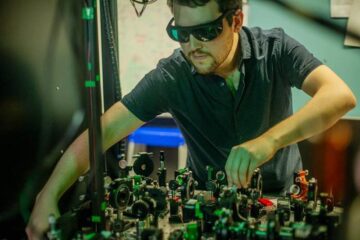Success of climate talks vital for 2°C target

The challenges of meeting the long-term target will otherwise increase drastically both in terms of the required emissions reductions and economic impacts.
This is shown by the first comprehensive multi-model-based assessment of so-called Durban Platform scenarios, conducted by a team of international scientists led by the Potsdam Institute for Climate Impact Research (PIK) and the Fondazione Eni Enrico Mattei (FEEM) in Italy.
The Durban Platform is the current negotiation track at the Warsaw climate talks that aims to reach a global climate agreement by 2015 to come into effect in 2020.
“The negotiations in Warsaw represent an important step in the negotiation process towards a climate agreement by 2015,” lead author Elmar Kriegler from PIK says. “While there are legitimate doubts about whether the Durban Platform negotiations can deliver on their promise, our analysis shows the importance of meaningful reductions in global emissions by 2020 to keep the 2 degree target within reach.” The later emissions get cut, the greater the necessary reduction rates to avoid more than 2 degrees warming, and hence the greater the impact on energy prices and economic growth.
“Even a delay of just 10 years of a climate agreement coming into effect would raise the economic challenges substantially, if emissions reduction efforts remained at their currently moderate level,” Kriegler says. The results are part of the comprehensive LIMITS project (Low Climate lmpact Scenarios and the lmplications of Required Tight Emission Control Strategies) on the implementation of 2 degree strategies in the major economies and will be published in a special issue of the journal Climate Change Economics. The scientists investigated a set of different outcomes of the Durban Platform negotiations process and their implications for reaching the 2 degree target with seven integrated assessment and energy-economy models to ensure the robustness of results.
Carbon dioxide removal could be key technology
Nonetheless there might be some flexibility for policy makers in implementing a global climate agreement towards the 2 degree target, according to the study. Translating the 2 degree target into emissions reductions requires choosing a maximum likelihood of temporarily overshooting 2 degrees that would still be tolerated. The choice of this tolerance level was found to have a significant effect on longer term emissions reduction requirements and economic impacts. However, the near term requirement of strengthening global climate policy was unchanged, as global emissions declined after 2020 in any scenario of global climate action coming into effect by 2020. In addition, taking CO2 out of the atmosphere in the 2nd half of the century could be a key element of implementing the emission pathways in the Durban Platform scenarios, for instance through technologies using energy from biomass combined with Carbon Capture and Storage. Plants absorb CO2 to grow and could be processed in biogas plants, with emissions captured and being stored underground.
This could be an option to compensate higher short term emissions with deeper emissions cuts in the long run, but at the expense of a higher likelihood of temporarily overshooting 2 degrees. At the same time, it would raise a number of concerns, because the CCS technology is not yet available for large-scale use and scaling up bio-energy comes with considerable risks by increasing the competition for arable land. “It is very risky to rely too much on removing CO2 from the atmosphere in the second half of the century,“ says Kriegler. “While we may need carbon dioxide removal even if global climate action is implemented in 2020, we would need much more of it if action is delayed further. Despite all these complexities, the message is fairly simple,” adds Kriegler. “In the longer term, there are a number of options to get to 2 degrees. But those will only remain on the table, if global climate action is substantially strengthened over the coming decade, so that global emissions decline after 2020.”
“This shows that the Durban Platform negotiations can still deliver an outcome consistent with the 2 degree target, but only if they can successfully implement global climate action on a long term target by 2020,” adds co-author Massimo Tavoni of FEEM. “Further delays in reaching an agreement would require much higher emission decline rates and would lead to much larger economic costs”.
Article: E. Kriegler, M. Tavoni, T. Aboumahboub, G. Luderer, K. Calvin, G. De Maere, V. Krey, K. Riahi, H. Rosler, M. Schaeffer, D. van Vuuren: What does the 2°C target imply for a global climate agreement in 2020? The LIMITS study on Durban Platform scenarios. To be published in a special issue of Climate Change Economics in early 2014.
More information on the LIMITS project:
http://www.feem-project.net/limits/index.html
More information to the special issue:
http://www.feem-project.net/limits/03_outreach_01_02.html
For further information please contact:
PIK press office
Phone: +49 331 288 25 07
E-Mail: press@pik-potsdam.de
Twitter: @PIK_Climate
Media Contact
All latest news from the category: Ecology, The Environment and Conservation
This complex theme deals primarily with interactions between organisms and the environmental factors that impact them, but to a greater extent between individual inanimate environmental factors.
innovations-report offers informative reports and articles on topics such as climate protection, landscape conservation, ecological systems, wildlife and nature parks and ecosystem efficiency and balance.
Newest articles

Combatting disruptive ‘noise’ in quantum communication
In a significant milestone for quantum communication technology, an experiment has demonstrated how networks can be leveraged to combat disruptive ‘noise’ in quantum communications. The international effort led by researchers…

Stretchable quantum dot display
Intrinsically stretchable quantum dot-based light-emitting diodes achieved record-breaking performance. A team of South Korean scientists led by Professor KIM Dae-Hyeong of the Center for Nanoparticle Research within the Institute for…

Internet can achieve quantum speed with light saved as sound
Researchers at the University of Copenhagen’s Niels Bohr Institute have developed a new way to create quantum memory: A small drum can store data sent with light in its sonic…





















